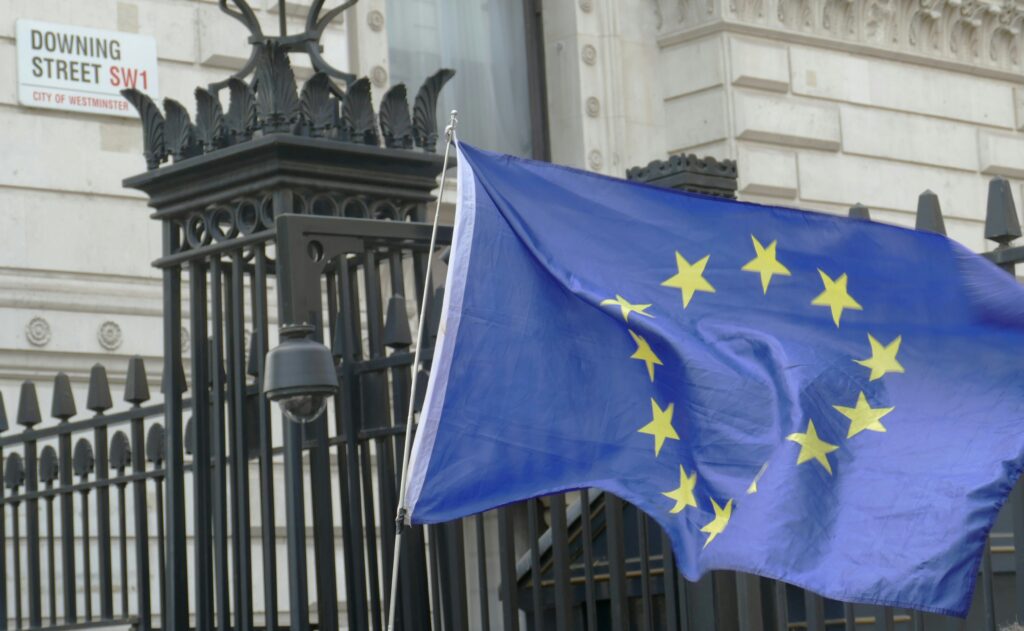One thing which the global pandemic did was re-ignite our passion for tech. During lockdown, we needed tech to connect with our friends and family. In 2021, the global consumer tech market was worth a staggering $1112bn! If you operate in the consumer tech sector, one of the ways in which you can gain market share is by expanding into new markets. This blog delves into how consumer tech giants have successfully expanded their businesses globally.
The consumer tech sector is primarily dominated by Japanese and South Korean based companies. Samsung, LG and Sony are global household names. SMEs account for a third of the consumer electronics sector. We analyse the globalisation strategies of three companies at different stages, Samsung, Anker Innovation and Sony to see what global expansion lessons we can learn from these big consumer tech companies.
Samsung
Today, Samsung is regarded as a premium quality brand. This wasn’t always the case. Samsung was once a second-tier Korean company producing low-quality products, which sold in discounted chains. The turning point in the company’s history was in 1993, when their Chairman, Lee Kun-Hee announced a new management initiative which transformed the company to a first-rate global brand known for innovation, in under two decades.
The successful repositioning of the brand was primarily achieved through altering their distribution strategy. Their goods were pulled out of low price retailers and moved to stores such as Best Buy and Amazon. To achieve global brand consistency, they consolidated their marketing agencies (55) to one agency. WPP was responsible for launching their brand-repositioning campaign. The agency created fashion-forward TV commercials, with a contemporary style and sold technical specifications as the key product benefits.
Targeting emerging markets
A significant factor in Samsung’s growth was their push into emerging markets, a strategy avoided by competitors Nokia and Apple due to the perceived high risk. Samsung managed to create strong positions in China and India.
Transnational strategy
Samsung deploys a transnational strategy which requires a high level of investment. They focus on developing economies of scale, and leverage local knowledge in order to adapt to local markets. For instance, in 2016 Samsung opened manufacturing plants in Africa, choosing Egypt and South Africa due to their developed infrastructure networks and tax relief. [1]
Samsung’s wholly-owned subsidiaries are given significant autonomy to operate in their domestic market. For example, in the UK, they have a R&D facility (located in Staines), and the UK arm is responsible for importing goods from Samsung facilities in Vietnam. The UK subsidiary is responsible for marketing the products to UK consumers. Samsung products, in large, are similar globally, however minor adjustments are made to their promotional strategies when targeting different markets.
Global strategic partnerships
Samsung and Microsoft collaborated in 2017 to work on Samsung’s tablet, the Galaxy Book. The partnership enabled improvements in device compatibility and connectivity specifications, giving Samsung a competitive edge against Apple’s iPad range.
Anker Innovation
We chose Anker Innovation because they have achieved global success through a very different strategy compared to Samsung. Despite Anker Innovation not being a household name, the Chinese company owns the brands Anker (charging technology), Eufy (robot vacuums), Nebula (home entertainment devices) and Soundcore (smart audio).
Anker International was successfully listed on the Growth Enterprises Market (GEM) in August 2020 on the Shenzhen stock exchange. Their growth was fueled by the pandemic, raising demand for personal devices. During 2020, they reported a sales growth of 41%!
How it began
The company was founded in 2011 in Changsha, China by ex-Googler, Steven Yang, who at the outset possessed less than $1 million in seed capital to get started. Since then he has grown the company through extensive research of Amazon reviews to identify customer needs, and developing products to solve their problems.
The company’s earliest products were laptop batteries and chargers. When laptop batteries became built-in, they diversified to mobile phone batteries and charging accessories. With over 6 billion smartphone users worldwide (2021), the market for smartphone charging accessories is still growing.
In 2014, the company moved to the IoT market, launching wireless audio products. Since 2016, Anker has expanded their product portfolio by launching intelligent cameras and Eufy, their robot vacuum.
Targeted developed countries
Anker targets overseas customers in developed markets, which represents 90% of their revenue. The North American market accounted for over 50% of their revenue, Europe provided over 17% followed by Japan at 12%. (2019) [2].
In September 2021, after a decade of targeting western customers, Yang announced that they want to tap into their domestic market. Their aim is to have one fifth of their revenue from the Chinese market by the end of 2024.
Distribution through Amazon
Anker’s first product was launched on Amazon Marketplace enabling them to reach users directly. In 2019, their online sales accounted for over 71% of the company’s revenue. The majority of online sales come from Amazon (94%).
Brand positioning
Their products were initially seen as low quality and low price. They repositioned themselves to ‘professional and reliable’ through the introduction of new projectors and smart audio products. Over time, their brand has become an industry benchmark. In overseas markets, both Eufy and Soundcore have built solid reputations.
Strategic location
Yang’s next steps are to expand Anker’s product portfolio to include smaller or less developed electronics. Their key focus is innovation. From a location viewpoint, they are situated near Shenzhen’s extensive electronic manufacturing sector and supply chain. This has helped other Chinese companies such as Huawei to grow quickly.
“If you have a good idea in China and talk directly to factories near you, the product soon becomes reality. A young American may have a similar idea, but the factories are too far away.” says Yang. [3]
Sony PlayStation
We chose Sony because they were an established global leader in the consumer electronics sector when they launched the PlayStation.
A brief history
The PlayStation is undoubtedly one of Sony’s most successful product launches, as well as being the most successful game console in the world. It’s difficult to believe that the original Playstation concept, a CD-Rom based gaming system using 3D graphics, was rejected by the Sony board back in 1992. Ken Kataragi, founder of the Playstation, was subsequently moved over to Sony Music following the board meeting.
Following Sega’s successful release of the game, Virtual Fighter, which was the first arcade game to use 3D graphics, it was evident that 3D graphics was the way forward. Kataragi persisted and finally gained board approval for the PlayStation in 1993.
In 1994, the PlayStation was presented to game publishers and received acclaim. Not only did it feature 3D capability, it was cheaper than the Sega Saturn and the Nintendo 64 and it was easier to manufacture games for, in comparison to Nintendo’s cartridge-based system. The first PlayStation was launched in December 1994 and became an enormous success.
Global appeal
Sony’s PlayStation revolutionised gaming. The 80s arcade style was transformed into photorealistic 3D games. The console was built with powerful hardware to support its 3D gaming requirements. The PlayStation became so popular that in 2000, Japan had to impose export limits on it.
Forged partnerships
Sony forged partnerships with game developers in Japan and North America. Developers preferred the CD Rom (later becoming DVD and Blu-Ray) over the cartridge option, used by Nintendo. With the PlayStation having a high number of users, game developers were more incentivised to create games for PlayStation because of potentially higher sales.
Complementary products
The Playstation’s success was not achieved through hardware alone, software also played a critical role. Through establishing external partnerships, users could access movies, music and games. (Netflix, Amazon). The PS4 (PlayStation 4) enabled users access to ‘PlayStation Plus’ where users can enjoy game patches, betas and the online multiplayer gameplay functionality. Gamers could also purchase games, music and movies through the ‘PlayStation Store’. The introduction of ‘PlayStation Vue’ gave users the ability to watch TV without cable or satellite.
Ultimately, the Playstation’s global success was due to:
- Competitive pricing – the PS4 was priced at $399. Xbox one was priced at $499 (Microsoft later reduced the price) and players often buy consoles which their friends own. By selling at a lower price, Sony captured the critical mass. However, the PS5 was launched at a premium price in 2020.
- Superior technical specifications – The PS4 had much higher graphic performance running at HD 1080p, compared to Xbox One’s games which were in HD 720p. Also PS4 had a faster memory, the GDDR5 variety, versus the slower DDR3 on Xbox.
- Global brand awareness – during the 1990s and early 2000s, the Japanese Sony brand was at its peak, being the global market leader in consumer electronics. Their products included TVs, the Walkman, a mobile phone partnership with Ericsson, and they developed the DVD and Blu-Ray.
We’ve cherry-picked three companies, at very different stages of their journey. Samsung’s fate was sealed by Lee Kun-Hee’s vision to transform the company into a tier one global brand. Anker International became a global success through reading Amazon reviews to gauge customer needs. Sony was already a global market leader when it launched the PlayStation.
What consumer tech firms can learn from these companies is that:
- Your brand matters in the consumer tech sector. Both Samsung and Anker International have repositioned themselves from a low price and low quality brand into premium brands.
- Partnerships were formed to gain competitive advantage.
- Innovation – instead of making something slightly better, continue to innovate. This is the key driver of growth in this highly competitive market.
We have worked with many mid-sized startups, including Oaxis and Hi-Tec, to create a go-to-market strategy allowing them to gain market entry and achieve a rapid return-on-investment. If you’re ready to embark on your global expansion journey, contact us today.
References:
[1] https://guardian.ng/business-services/business/egypt-south-africa-get-samsung-manufacturing-plants-ahead-of-nigeria/
[2] https://medium.com/firmknow/anker-innovations-a-global-consumer-brand-started-from-amazon-b1edafcf1f28
[3] https://www.bloomberg.com/news/articles/2021-09-09/their-phone-chargers-rule-amazon-but-anker-has-bigger-ambitions
[4] https://www.daytranslations.com/blog/sony-playstation-world/






